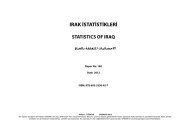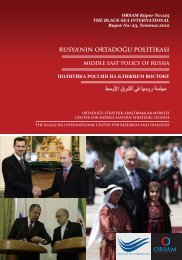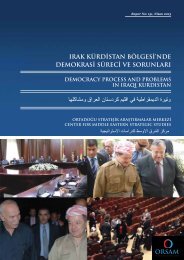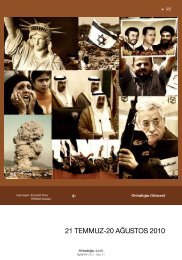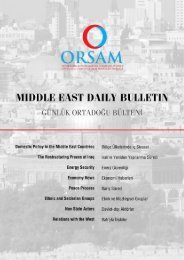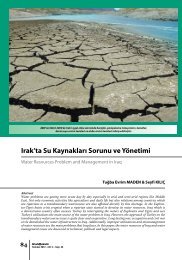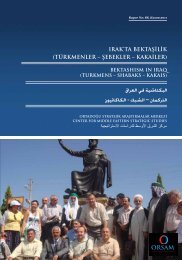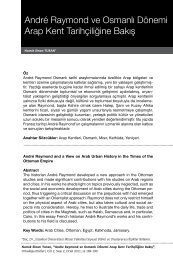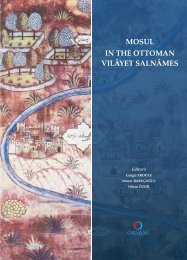GAO-02-359T Gulf War Illnesses: Similarities and ... - orsam
GAO-02-359T Gulf War Illnesses: Similarities and ... - orsam
GAO-02-359T Gulf War Illnesses: Similarities and ... - orsam
You also want an ePaper? Increase the reach of your titles
YUMPU automatically turns print PDFs into web optimized ePapers that Google loves.
Mr. Chairman <strong>and</strong> Members of the Subcommittee:<br />
We are pleased to participate in this international hearing by presenting<br />
our findings on differences in illnesses, as well as exposure, among the<br />
Allied Forces—France, the United Kingdom (U.K.), <strong>and</strong> the United States<br />
(U.S.)—that served in the Persian <strong>Gulf</strong> <strong>War</strong>, which began in 1990. My<br />
statement is based on on our report entitled Coalition <strong>War</strong>fare: <strong>Gulf</strong> <strong>War</strong><br />
Allies Differed in Chemical <strong>and</strong> Biological Threats Identified <strong>and</strong> in Use<br />
of Defensive Measures, which we issued on April 24, 2001, <strong>and</strong> subsequent<br />
work that we conducted at your request. 1<br />
As you know, shortly after the war, some veterans began reporting<br />
illnesses that they believed might be due to exposure to chemicals; to<br />
medical countermeasures, such as drugs <strong>and</strong> vaccines, to guard against<br />
chemical <strong>and</strong> biological warfare agents; <strong>and</strong> to other potentially hazardous<br />
substances used during the war. In the United Kingdom (U.K.) <strong>and</strong> the<br />
United States (U.S.), such exposure has been evaluated as a possible cause<br />
of illnesses among veterans. In France, the legislature has recently<br />
completed an inquiry into the health of French veterans of the <strong>Gulf</strong> <strong>War</strong>.<br />
Consequently, the French government has decided to study this issue<br />
systematically.<br />
In our testimony today, we will present our findings on differences among<br />
the French, U.K., <strong>and</strong> U.S. forces concerning the assessment of Iraqi<br />
chemical <strong>and</strong> biological threats <strong>and</strong> the use of various medical<br />
countermeasures. We will also report on the extent of illness, as well as<br />
exposure, reported by each country’s veterans. In particular, we will focus<br />
on the results of population-based surveys of <strong>Gulf</strong> <strong>War</strong> veterans’ exposure<br />
to chemicals, as well as drugs <strong>and</strong> vaccines to guard against warfare<br />
agents. For a discussion of our scope <strong>and</strong> methodology, see appendix I.<br />
For a list of the organizations we contacted in France <strong>and</strong> the United<br />
Kingdom, see appendix II.<br />
Background<br />
Following the Iraqi invasion of Kuwait on August 2, 1990, the United<br />
Nations (U.N.) set a deadline of January 15, 1991, for Iraqi withdrawal<br />
from Kuwait <strong>and</strong> authorized military action to enforce this deadline. These<br />
U.N. resolutions formed the legal canopy for the Persian <strong>Gulf</strong> <strong>War</strong>, which<br />
1<br />
Coalition <strong>War</strong>fare: <strong>Gulf</strong> <strong>War</strong> Allies Differed in Chemical <strong>and</strong> Biological Threats<br />
Identified <strong>and</strong> in Use of Defensive Measures (<strong>GAO</strong>-01-13, April 24, 2001).<br />
Page 1<br />
<strong>GAO</strong>-<strong>02</strong>-<strong>359T</strong>




